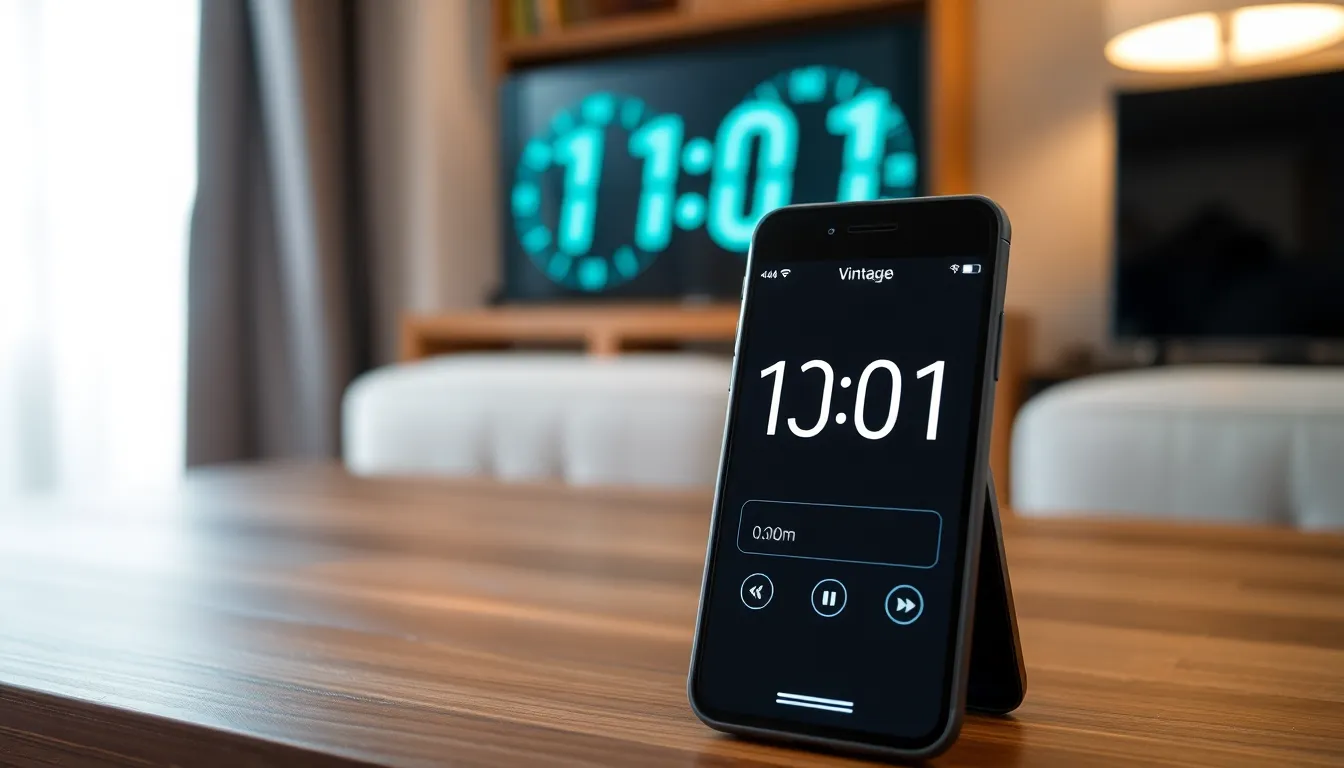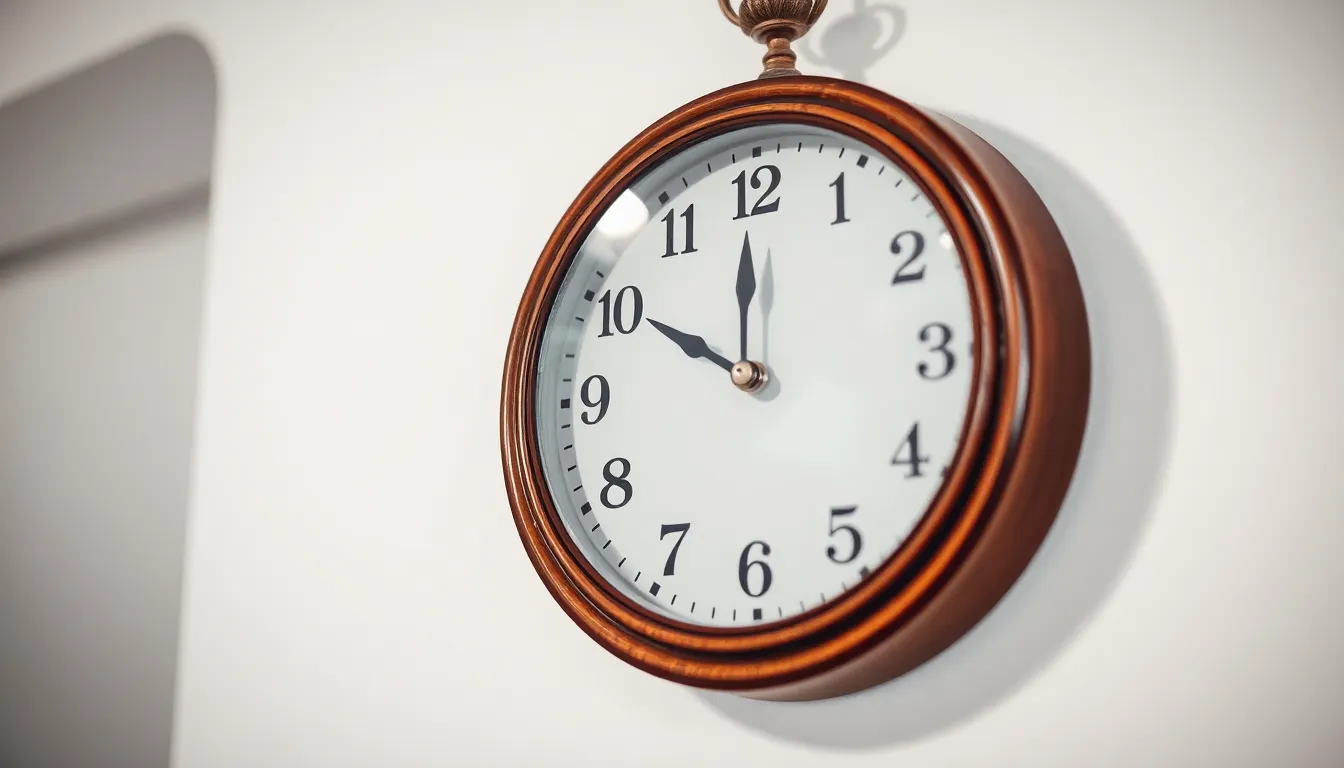Table of Contents
ToggleEver found yourself staring at the clock, wondering how long until that magical moment of 11:01? It’s the time when the morning coffee kicks in, and the world feels just a bit more manageable. Whether you’re counting down to a meeting, a lunch break, or the next episode of your favorite show, knowing how long you have left can make all the difference.
Understanding Time Calculation
Time calculation plays a crucial role in daily activities and anticipation of upcoming events. Understanding how to count down to 11:01 enhances productivity.
Importance of Time Management
Effective time management improves focus and efficiency. Completing tasks by a certain time reduces stress and increases motivation. Recognizing how long until 11:01 allows for a structured approach to daily responsibilities. Prioritizing activities leads to better outcomes. Individuals often meet deadlines when they keep track of time effectively.
Basics of Time Conversion
Time conversion involves understanding hours and minutes. A full hour consists of 60 minutes. Knowing how to convert between different time units simplifies calculations. For example, converting 30 minutes into decimal form equals 0.5 hours. Understanding this basic concept helps in determining how much time remains until 11:01. Recognizing these principles aids in enhancing punctuality and time-based decision-making.
Methods to Calculate “How Long Until 11:01”


Several methods exist to determine how long until 11:01. These approaches include using a clock, a timer, and various digital tools or apps.
Using a Clock
A wall or wrist clock highlights the current time, making it straightforward to calculate the remaining minutes. First, check the hour. If it’s before 11, simply subtract the current time from 11:01. For example, if it’s 10:45, that means 16 minutes remain. When it hits 11, count the minutes to 11:01. This method offers direct visual feedback, allowing for quick assessments of time remaining.
Using a Timer
Setting a timer provides a focused way to count down to 11:01. Start by determining how much time is left until that specific moment. For instance, if the current time is 10:50, set the timer for 11 minutes. When the timer goes off, it indicates 11:01 has arrived. Using a timer eliminates distractions, encouraging individuals to manage their time efficiently as they await the designated moment.
Digital Tools and Apps
Many digital tools and apps facilitate quick calculations, offering a modern solution to determine time until 11:01. Smartphone clocks and countdown apps can display real-time updates for accurate tracking. Users can input the target time directly, and the app will instantly show how much time remains. This method suits those who prefer technology and provides features like reminders and notifications, enhancing time management and productivity.
Real-Life Examples
Timing plays a critical role in everyday life. Estimating time effectively can lead to better decision-making and productivity.
How to Estimate Time During Everyday Activities
Estimating time during activities enhances efficiency. Individuals might allocate specific time blocks for tasks like cooking or exercising. For instance, if someone knows it takes 45 minutes to prepare dinner, they can schedule accordingly. Recognizing how long tasks take builds better routines. Additionally, using tools like timers or smartphone reminders further streamlines this process. Understanding the remaining time until 11:01 allows for timely completion of tasks, ensuring they transition smoothly into their next commitments.
Importance in Meeting Deadlines
Meeting deadlines drives productivity. Awareness of the time left until 11:01 helps prioritize tasks effectively. Professionals often break down larger projects into manageable segments. By doing so, they stay focused on their objectives while ensuring timely submissions. Individuals who consistently track time exhibit improved performance trends. As deadlines approach, increased motivation naturally follows. Calculating how much time remains until significant deadlines reinforces a proactive approach to task management. Benefit from structured timekeeping leads to reduced stress in busy environments, creating a culture of accountability and productivity.
Tips for Improving Time Awareness
Improving time awareness requires practice and techniques that integrate seamlessly into daily routines. These strategies enhance the ability to manage time effectively, especially when counting down to significant moments like 11:01.
Developing a Routine
Establishing a daily routine strengthens time awareness. Morning rituals, like checking the time, set a mental framework for the day. Consistency reinforces time perception, allowing individuals to anticipate upcoming tasks accurately. Scheduling breaks at regular intervals aids in recognizing the passage of time. Planning specific activities before significant moments, such as 11:01, adds a sense of structure. Integrating reminders into daily activities ensures that attention remains focused on time-sensitive tasks. Ultimately, routines cultivate an environment of awareness that sharpens the ability to keep track of time.
Techniques for Better Time Estimation
Using specific techniques improves time estimation skills. Visualizing time in segments makes it easier to break tasks into manageable parts. Activities like cooking or exercising benefit from estimating how long each will take, allowing for better planning. Setting timers for each task creates a benchmark for measuring efficiency. Regularly reflecting on completed tasks helps refine future time estimates, making them more accurate. Engaging in time-tracking practices cultivates awareness of how long different activities truly take. Prioritizing these techniques enhances productivity and ensures better decision-making as the clock approaches milestones like 11:01.
Understanding how long until 11:01 can transform the way individuals approach their day. By mastering time calculations and utilizing various tools, they can enhance their productivity and reduce stress. Effective time management not only helps prioritize tasks but also fosters a sense of accomplishment as deadlines are met.
Incorporating strategies for better time awareness can lead to improved focus and motivation. As the clock ticks down to 11:01, the anticipation of that moment can serve as a powerful motivator. Embracing these practices encourages a more efficient and organized lifestyle, ultimately leading to greater success in both personal and professional endeavors.







